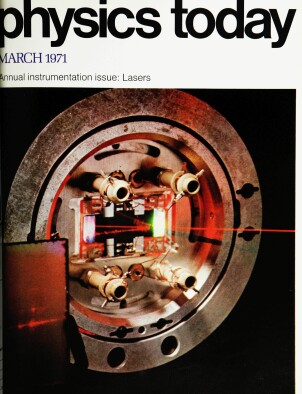MAR 01, 1971
Solid‐state physicists have been talking about one‐dimensional systems for many years. Recently neutron‐scattering experiments have been performed on two different materials, which exhibit one‐dimensional behavior. Tetramethyl ammonium manganese chloride, appears to act like a nearly ideal one‐dimensional antiferromagnet, down to at least 1.8 K, according to M. T. Hutchings and Gen Shirane (Brookhaven), Robert J. Birgeneau (Bell Labs) and S. L. Holt (University of Wyoming). Shirane, John Skalyo Jr (Brookhaven). S. A. Friedberg and H. Kobayashi (Carnegie–Mellon University) had earlier found another substance, cesium manganese chloride dihydrate, that also had some one‐dimensional character, although not quite as striking.
This article is only available in PDF format
© 1971 American Institute of Physics
